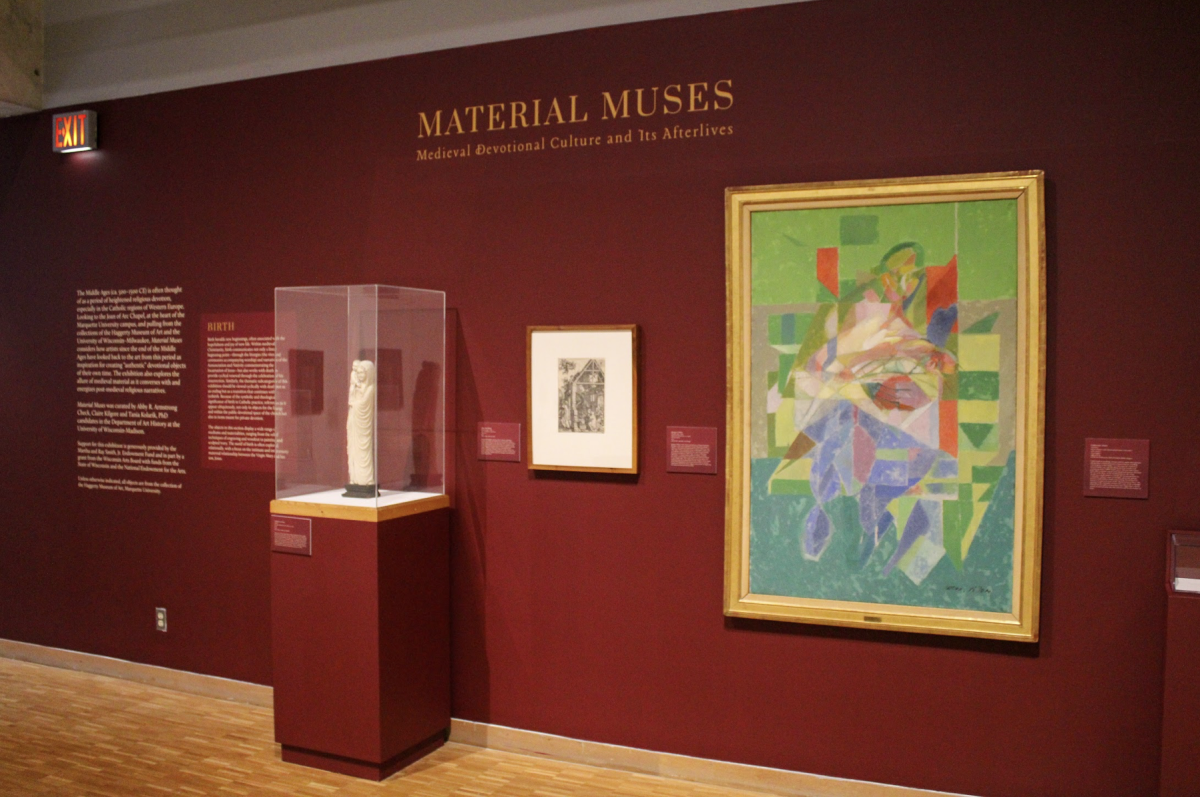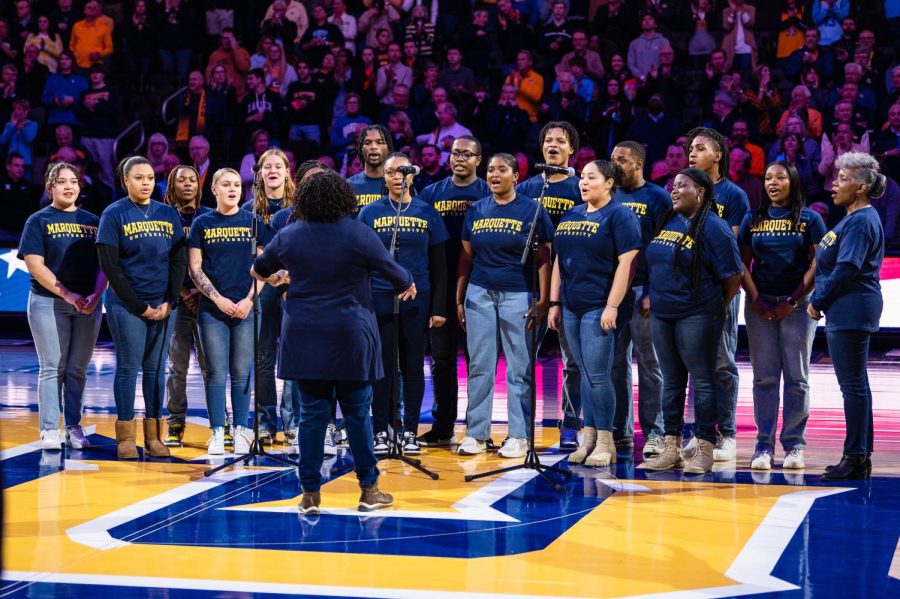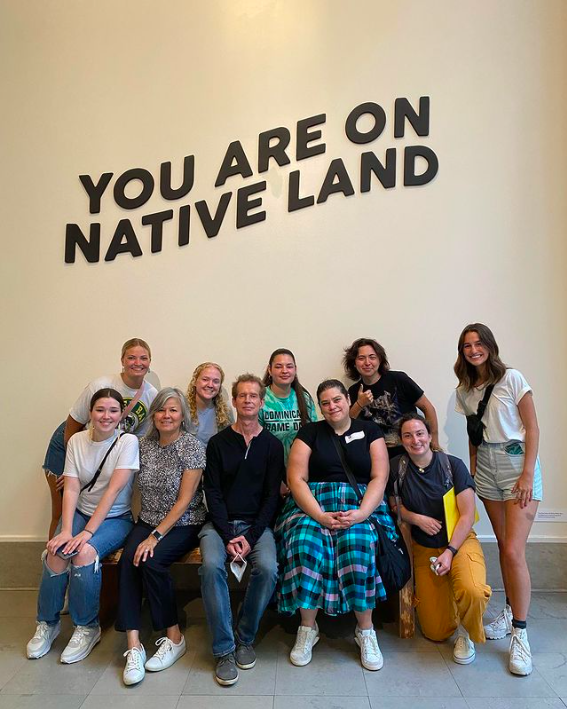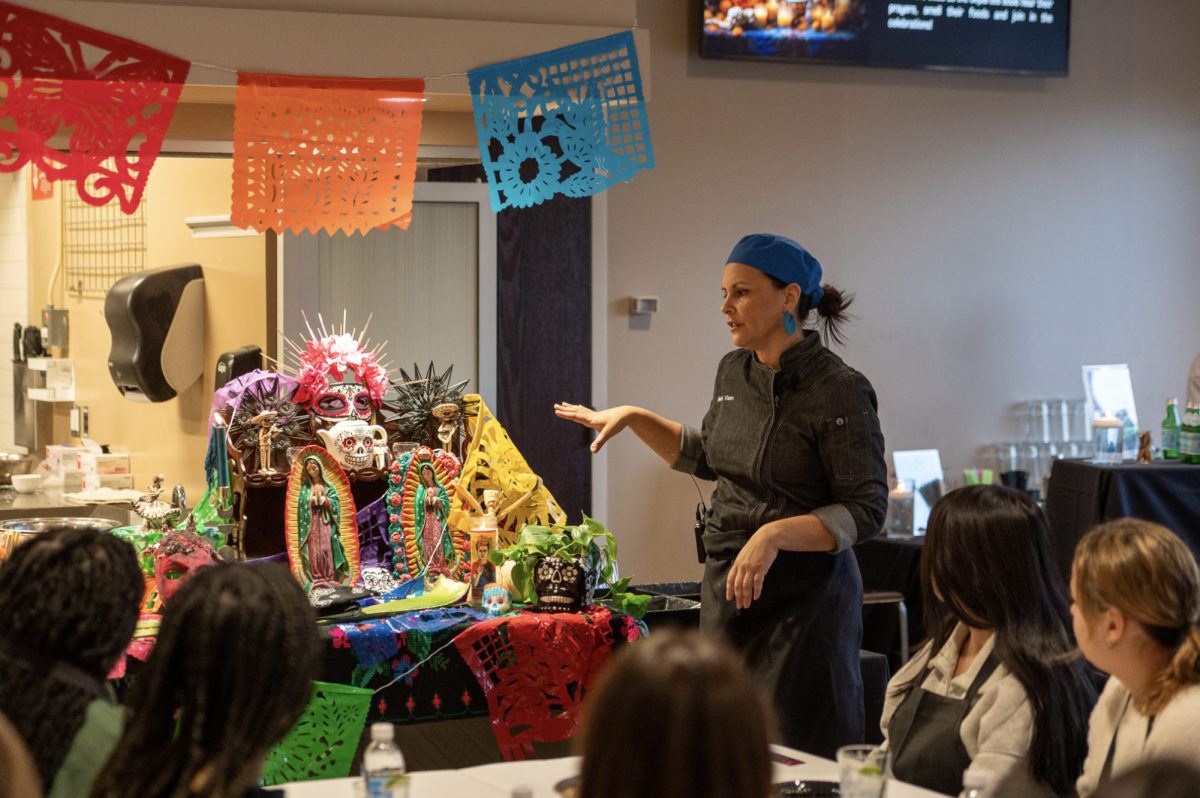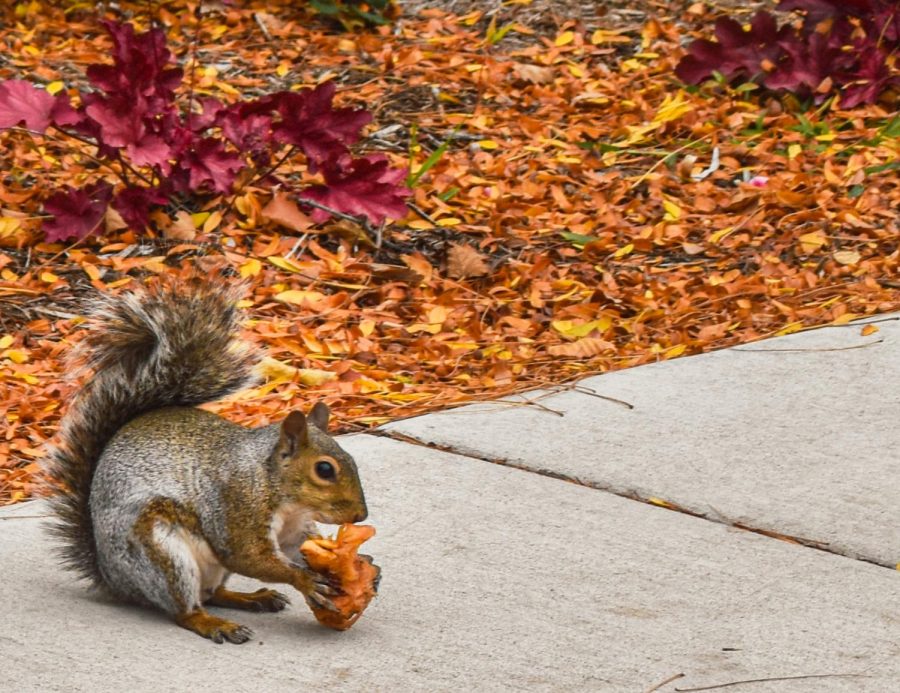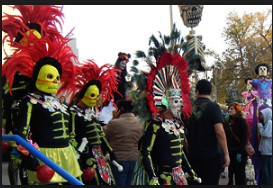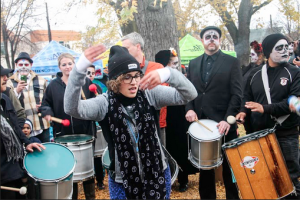
Milwaukeeans gathered to experience Dia de los Muertos on Saturday. Walker Square Park came alive with giant paper mache skulls and ofrendas (offerings) proudly carried by eccentric parade participants with skull-painted faces and festive costumes.
The procession began with a prayer in the middle of Walker Square Park, dedicating the parade to loved ones lost through violence. After the prayer, drums picked up and began to lead parade participants east down National Avenue.
As part of Day of the Dead tradition, Mexican families build altars in the days preceding Nov. 1. Many altars featured in Saturday’s parade were decorated with pictures of the deceased and items they once owned. These items included sweets they enjoyed or dolls and toys from their childhood. Some parade guests simply carried signs with their deceased loved ones’ pictures and their dates of death.
Ofrendas were meant to welcome the deceased back for a short visit with their family and friends. They included sugar skulls, adding a festive element. Incense and other sweet smells were also common sights throughout the park. The appealing scents are meant to guide the deceased to their altars.
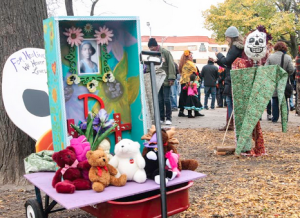
Guests created the sugar skulls by making a mold out of meringue powder, sugar and water. The mix is then put into a plastic skull mold for five to six hours to dry and take form. Once the mold is dry, a scoop is taken out of the center. The center is then filled with glue in order for the front and back to stick together.
After the skulls dry, it is time for them to be decorated. People decorate sugar skulls with bright colors and glitter to add illumination to the altars. Some sugar skulls even include the name of the recipient on them in icing on the forehead. Icing designs on the skull heads are in vivid colors such as bright yellow, hot pink and neon blue. Feathers, beads and rhinestones stick to the icing and make the skulls even more eye-popping.
The faces on sugar skulls are always happy and smiling. The skulls are meant to be cheerful and not morbid in order to clear away bad vibes from the spirits.
The altars were also decorated with “papel picados,” a phrase that literally translates to perforated paper. Papel picados are detailed hand-cut designs on brightly colored tissue paper that add flare to the ofrendas. Papel picados also appear during other special occasions in the Mexican tradition such as weddings, Easter and Christmas.
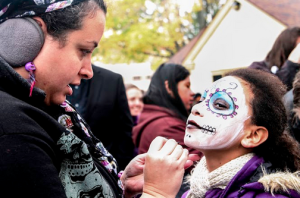
Common papel picado designs in Saturday’s celebration included humorous images of skulls and skeletons. The skeletons in the designs were shown dancing or smiling, and even playing instruments. Like the sugar skulls, papel picado designs are meant to emphasize the lighthearted, celebratory aspect of Dia de los Muertos. Papel picado designs typically use purple, orange and pink paper to stand out.
This practice of Mexican paper cutting traces back to the Aztecs, who were also honored in Saturday’s celebration through dances following the procession. Before the Spanish invasion in the early 16th century, the Aztecs thrived. They cut detailed designs using paper made from mulberry and fig trees. Ancient Aztecs referred to the designs as amatl. Amatl designs served as decorations in festivals and typically depicted gods and goddesses. After the Spanish invasion, Mexico adopted the practice, and it has evolved over the years, becoming more complex and detailed.
Since the skull is the symbol of Dia de los Muertos, the giant paper mache skulls carried by parade participants served as another way to honor the deceased loved ones. These skulls are made from large balloons, empty jars, tissue paper, battery powered light and modeling clay.
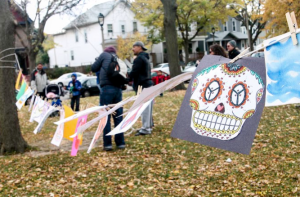
Parade guests made their giant skulls by blowing up a large balloon a day in advance in order to make it more flexible. They then took their balloons and attached them to an empty jar with masking tape. The next step is to cover the balloon with two layers of tissue paper using glue and a paintbrush. Once the skull is dry, artists cut out the faces of the skull and attach them to giant sticks in order to display them in the parade.
The vibrant artistic aspects enhanced Saturday’s parade celebration of Dia de los Muertos. The artists’ time and effort was apparent through the great amount of details on each paper mache skull and altar. The art taught parade guests about the rich traditions and ancient history of Dia De Los Muertos.


